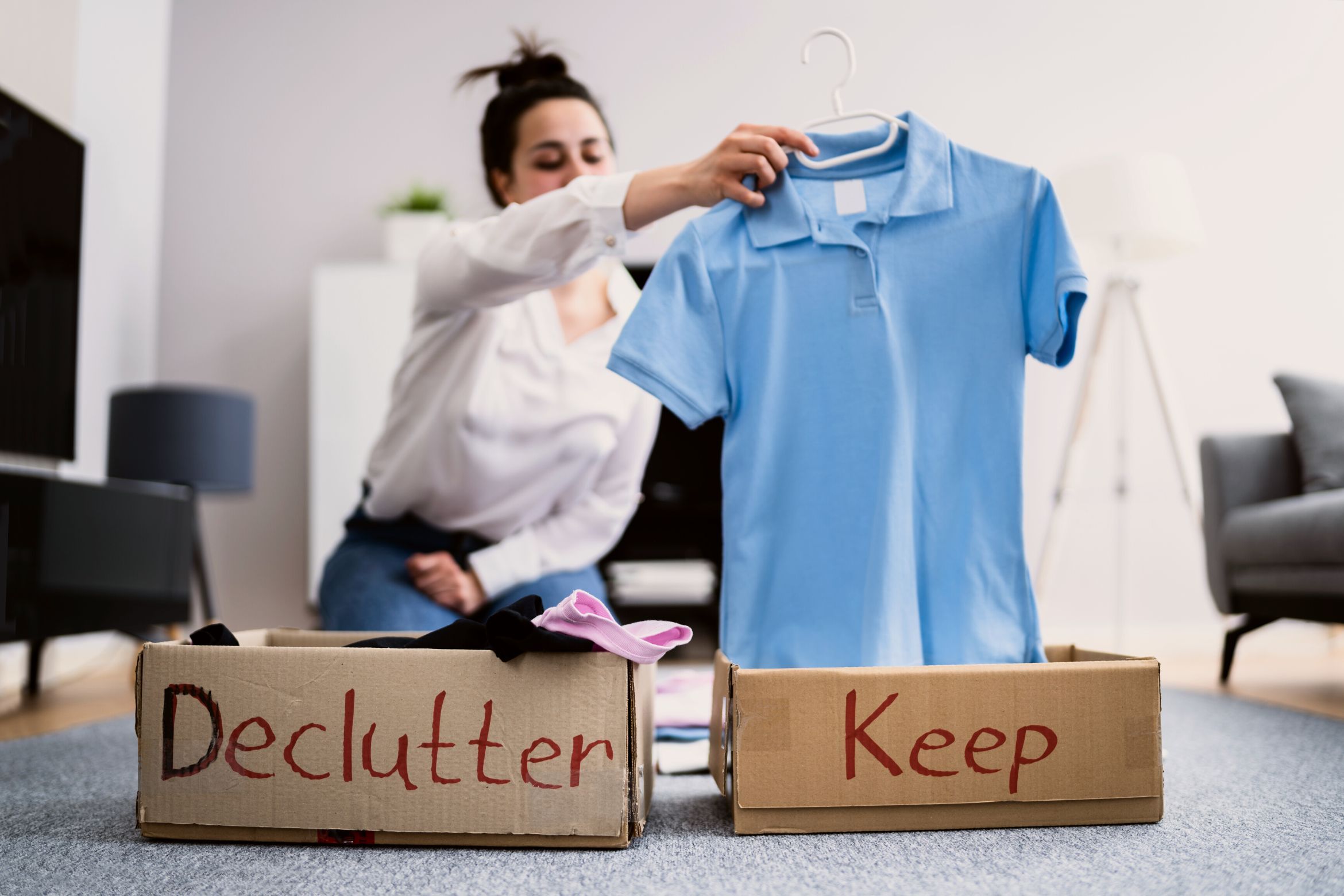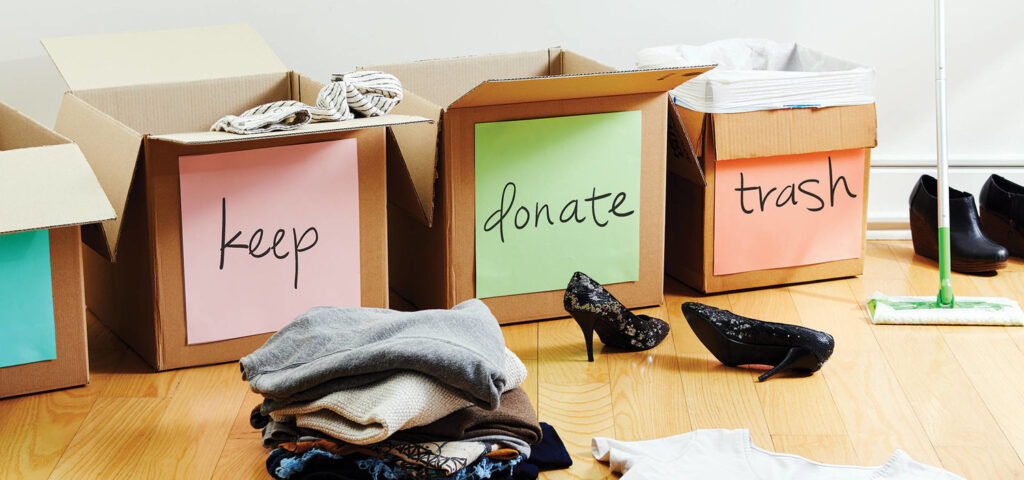If you’re feeling overwhelmed by clutter filling up every corner of your home, you’re not alone. Many people struggle to keep their living spaces organized and efficient. The good news is that with some effort and the right decluttering strategies, you can transform even the messiest home into a tidy one.
Here’s a breakdown of the key steps for successful decluttering.
Start With A Plan
Before diving into cleaning out years of accumulated stuff, make a decluttering plan to stay focused and motivated. Ask yourself:
- What are your main goals? (example: clear out the basement to create a workout space)
- Which areas of the home should you resolve first?
- How much time can you devote per week to decluttering? Pace yourself.
- What are your criteria for deciding what to donate, trash or keep? This will help you avoid indecision later.
Having clearly defined objectives, priorities and guidelines will prevent the process from becoming overwhelming.
Sort Through Categories
Going room by room aimlessly sorting through piles of random items is inefficient. Instead, use a category-based approach for a more structured cleanout. For example:
Start with clothing and accessories. Try on or evaluate each garment – anything worn out, ill-fitting or not worn in over a year should be donated or trashed.
Next to address are books, movies and music. Be disciplined in only keeping true favorites you’ll revisit.
Move through household items like kitchenware and décor objectively. Discard chipped dishes or holiday items you no longer need.
Keep working category by category until each overflowing drawer, shelf and storage container has been sorted through.

Create Efficient Storage Solutions
The best way to maintain an organization long-term is by maximizing where items are kept. Now that you’ve pared down your belongings, invest in storage solutions fit to the remaining items.
Use drawer organizers to neatly file away linens and clothing.
Install shelving for display items like books and collectibles. Utilize baskets or bins to neatly keep toys, craft supplies and seasonal items. Getting everything tucked away into its proper “home” creates efficiency and makes regular tidying much quicker going forward.
Haul Away Unwanted Items
An inevitable part of decluttering involves physically removing the piles of stuff you’ve parted ways with from the house. Depending on how much unwanted material you’re dealing with, consider hiring a junk removal service to conveniently transport bulky items and trash. Look for a company that offers affordable rates for hauling everything away quickly, allowing you to focus on reorganizing rather than thinking of how to dispose of your unwanted items.
Develop Daily/Weekly Cleaning Routines
Now the decluttering work begins – maintaining organization through quick, frequent cleaning sessions prevents messes from piling up again. A few habits to build:
- Make your bed each morning so the room looks neat all day.
- Assign chores like wiping counters or cleaning floors to certain days for consistency.
- Do miscellaneous decluttering (refiling items, dusting shelves) while watching TV at night to utilize downtime.
Automating tasks through routines is essential for stopping clutter creep in its tracks as you enjoy a simplified, stress-free home environment.
Find Places For Important Paperwork
Don’t overlook paper clutter – mail, receipts, bank statements, and kids’ artwork tend to spread quickly. Having designated stations for dealing with paperwork streamlines processing:
- Use a sorter tray by the front door for incoming mail. Sort bill payments into the bills drawer right away.
- Display magnet boards for permission slips or flyers needing action.
- Scan and backup digital copies of certain documents before recycling hard copies. Reduces filing space needed.
- Store seldom-needed paperwork (manuals, tax returns) in safely archived banker’s boxes. Easy access if important records are ever needed.
Create Homes for Everything
The solution for beginners realizes any space can be organized with the right storage solutions for your stuff. Use shelves, racks, bins and baskets that fit the area to neatly file items away. Anchor furniture is tightly closed so things don’t fall out and spread around. When everything has an organized “home”, fewer mess piles up around your house.
Maintain Cleaning
Once items are decluttered and stored properly, just 15-20 minutes of cleaning every day keeps order. Follow the “OHIO” rule: “Only Handle It Once”. Put stuff back as soon as you’re done, don’t just set something down randomly. Also, do a quick cleaning before bedtime so you wake up to a nice orderly home. Making these mini-cleaning habits part of your routine is important to prevent clutter buildup again.

Make It a Lifestyle
Look at decluttering not as a one-time job but a task to do every day. Start evaluating what you really need before buying more stuff. Build habits like meal prepping to reduce waste, wearing versatile clothes that mix and match, and saving files digitally instead of paper piles. The less excess stuff coming into your home, the easier it is to stay organized. Soon living clutter-free will feel normal.
Use these tips to take control of your home’s organization again. Be patient–room-by-room, box-by-box. Clutter will make its way out. Before long, you’ll be enjoying open space, clean surfaces and efficiency.






